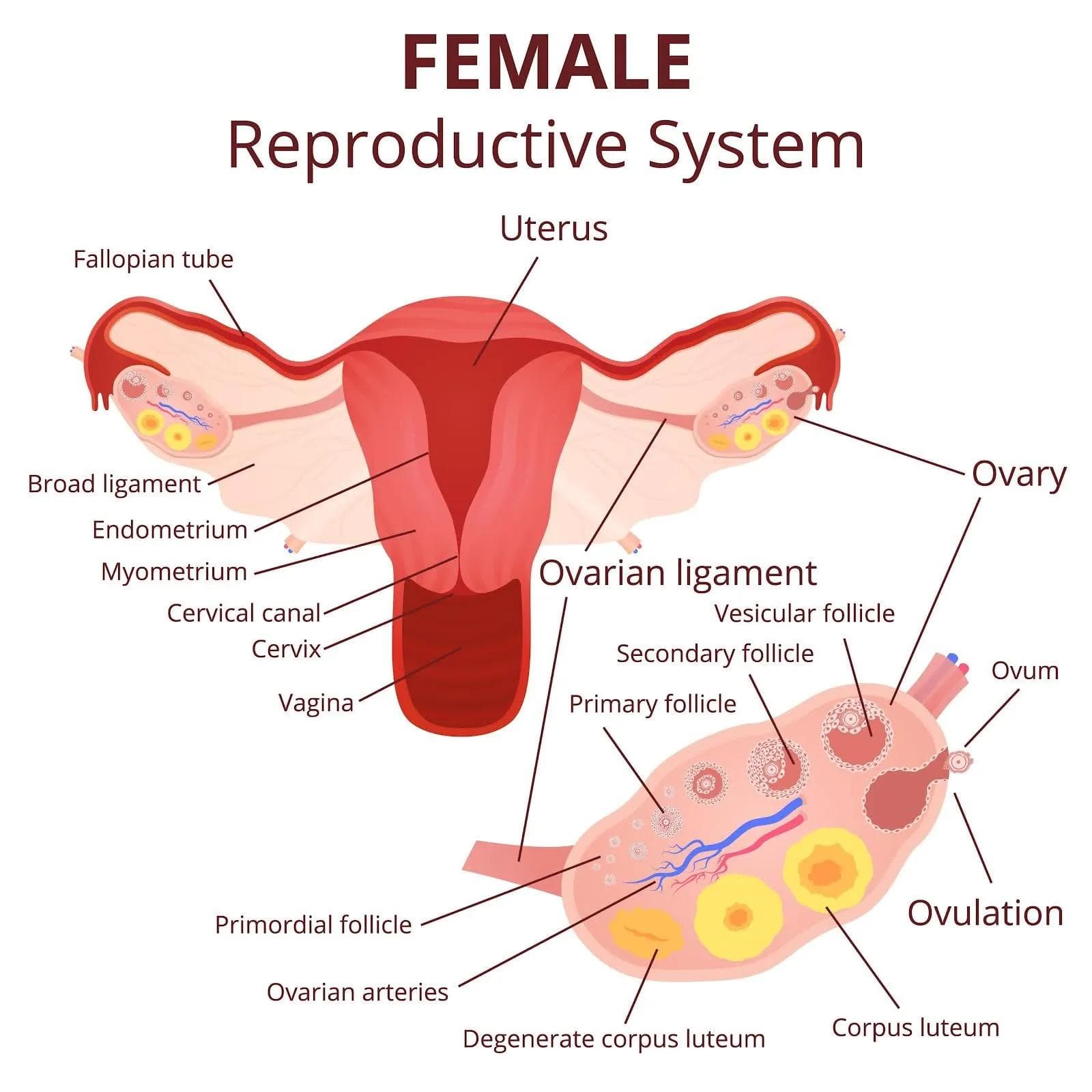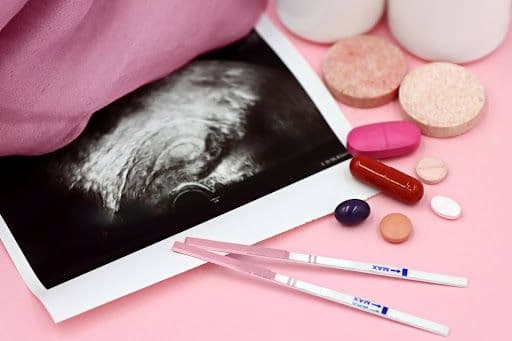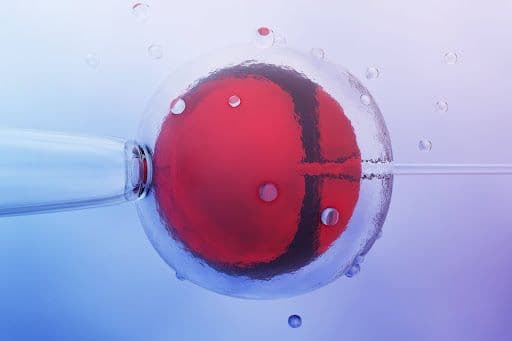Why Does Ovulation Hurt so Bad? Is it Normal?
Sharp mid-cycle pain can be alarming but often reflects normal ovulatory changes that vary greatly between people. Learn the likely causes, straightforward comfort techniques, and which symptoms merit a clinical check, while tracking occurrences with the Samphire app and exploring brain-based approaches such as Nettle™ for added relief.


Cycle tracking apps often predict high energy and libido around day 14. The reality for many women looks very different. A sharp twinge hits the lower abdomen. A dull ache spreads through the pelvis. You might find yourself curled up with a heating pad instead of conquering the world.
You are likely asking why ovulation hurts so bad if the process is supposed to be natural.
The phenomenon has a name. Medical professionals call the sensation Mittelschmerz. The German word translates literally to "middle pain." While pain and discomfort during ovulation are common, affecting up to 40% of menstruating people, debilitating pain is not something you must simply endure.
Samphire takes a brain-first approach to women's health. We look beyond the ovaries to understand how the nervous system processes cycle pain. We will explain what causes ovulation pain, signs that indicate a deeper issue like endometriosis, and how tools like Lutea™ can help you reclaim your mid-cycle days.
What Causes Ovulation Pain Exactly?

Understanding the biology helps reduce the anxiety around the sensation. Ovulation pain occurs when a follicle in the ovary ruptures to release an egg.
The process is physically intense on a microscopic level. Before the egg releases, the follicle stretches the surface of the ovary. This stretching sensation alerts pain receptors. Once the follicle ruptures, fluid and a small amount of blood release into the abdominal cavity along with the egg.
This fluid can irritate the lining of the abdominal wall, known as the peritoneum. The irritation triggers the sharp ovary pain during ovulation that many women recognize instantly. The body absorbs the fluid eventually. The pain resolves soon after.
Symptoms: Left Sided Ovulation Pain and Timing
The location of the pain offers clues about your cycle. You might notice left sided ovulation pain one month and right-sided pain the next. The ovaries take turns releasing eggs. The pattern is not always a perfect alternation.
How long does ovulation pain last?
The duration varies significantly between individuals.
- Short-term: Some feel a sudden, sharp twinge that lasts only a few seconds or minutes.
- Medium-term: Others experience a dull, cramping ache that persists for 24 to 48 hours.
Seeking medical attention is necessary if pain persists longer than two days. Vomiting or fever alongside the pain also requires a doctor visit. Severe, prolonged pain falls outside the range of typical Mittelschmerz.
Is it Normal to Have Cramps During Ovulation?
Many women wonder if ovulation is painful for everyone. The answer is no. Only about 40% of women regularly feel ovulation.
You might ask if it is normal to have cramps during ovulation if you fall into that 40%. Yes. Mild to moderate cramping is considered normal physiological pain. The sensation often feels different from menstrual cramps (dysmenorrhea). Period cramps usually feel like a heavy, dull ache across the entire lower abdomen. Ovulation pain is typically sharper. It is usually localized to one specific side.
When Ovulation Pain Signals a Problem
Bad ovulation pain that stops you from functioning is not normal. If ovaries hurt during ovulation to the point where over-the-counter medication offers no relief, underlying conditions may be at play.
Endometriosis and Adhesions
Endometriosis involves tissue similar to the uterine lining growing elsewhere in the body. This tissue can form adhesions or scar tissue around the ovaries. When the ovary swells to release an egg, the scar tissue pulls and stretches. The action causes severe pain.
Ovarian Cysts
Cysts are fluid-filled sacs that can develop on the ovaries. A cyst rupturing or twisting (torsion) during the ovulation window causes excruciating pain.
Prior Surgeries
Scar tissue from past surgeries, such as a C-section or appendix removal, can adhere to the ovaries. The natural movement of the ovary during ovulation pulls on this scar tissue. The result is intense pain and discomfort during ovulation.
The Brain-Pain Connection: Why It Hurts More for Some
Biology explains the mechanical cause. Neuroscience explains the intensity. You might wonder why your friend feels a flutter while you feel a stab. The answer lies in the brain.
Research shows that pain is not just a signal from the body. The brain constructs the experience of pain. A concept called Central Sensitization plays a huge role here.
When the nervous system becomes sensitized, the brain amplifies signals from the body. A mild irritation from follicular fluid might be interpreted by a sensitized brain as severe danger. This amplification often happens in people with chronic cycle issues or conditions like PMS or PMDD.
Neuroplasticity means the brain learns pain pathways over time. Negative plasticity makes the brain "better" at feeling pain. The goal of effective management is teaching the brain to regulate those signals down rather than up.
Managing the Pain: A Brain-First Approach
Standard advice usually involves heating pads and ibuprofen. While helpful, these methods only address the symptoms temporarily. A holistic approach addresses the brain's role in the experience.
Meet Lutea™ (North America)
Lutea™ is a wearable device available in North America. The technology offers a hormone-free way to support women through painful cycle phases.
Lutea™ is not a medical device in North America. The headband utilizes tDCS (transcranial Direct Current Stimulation). This technology has been studied for decades regarding its ability to modulate brain activity.
Gently stimulating the motor cortex and the dorsolateral prefrontal cortex helps the brain regulate pain perception and mood. Using Lutea™ consistently can help lower the "volume" of pain signals the brain receives. The method targets the root of pain processing rather than just the uterus or ovaries.
Track to Predict
Knowing when the pain will hit provides a massive advantage. Left sided ovulation pain often catches women off guard. Using the Samphire App allows you to pinpoint the ovulation window.
- Log the cycle dates.
- Note the specific side of the pain.
- Track the intensity.
The app uses this data to predict the next window of pain and discomfort during ovulation. You can then begin using Lutea™ or other management strategies a few days in advance. Preparation prevents the pain from becoming overwhelming.
Conclusion: Reclaiming the Middle of the Cycle
Ovulation pain reminds us that the menstrual cycle is a powerful biological event. The process involves real physical changes. While pain and discomfort during ovulation are common, suffering in silence is unnecessary.
Understanding the mechanics of the follicle and the fluid helps. Recognizing the role of the brain in pain processing allows for change.
Combining body awareness with brain-based tools creates a path to relief. Whether tracking with the Samphire App or managing pain perception with Lutea™, options exist. You can move through day 14 with confidence rather than fear.
Ready to manage cycle pain differently?
Check out how Lutea™ supports cycle wellness hormone-free. Download the Samphire App to start tracking your unique patterns today.
Frequently Asked Questions
Why does ovulation hurt so bad?
The pain stems from the physical stretching of the ovarian surface by the growing follicle. The rupture releases fluid and blood. This fluid irritates the abdominal lining. A sensitized nervous system can amplify these physical signals. The combination results in bad ovulation pain.
Is It Normal To Have Ovary Pain During Ovulation?
Yes. Mild to moderate ovary pain during ovulation is normal for about 40% of women. The sensation should be manageable with rest or mild medication. Pain that interferes with daily life or causes vomiting is not normal. Such symptoms require a doctor's visit.
What causes pelvic pain after ovulation?
Pelvic pain occurring after the egg releases usually results from the residual fluid irritating the peritoneum. The corpus luteum (the cyst that forms after the egg releases) can also grow rapidly. The growth can cause internal bleeding or simple pressure. This results in lingering pain and discomfort during ovulation windows.
Is It Normal to Feel Discomfort During Ovulation?
Yes. Feeling a twinge, a pop, or a dull ache is normal. The sensation confirms that the body is functioning as intended. Tracking the sensation helps confirm ovulation is happening.
Related Articles

How Long Does Ovulation Last? Understanding Your Fertile Window
Ovulation itself lasts just 12–24 hours, but your fertile window extends up to six days thanks to sperm surviving in the body for several days before the egg is released. Our guide explains when ovulation happens, how to identify your most fertile days, and what affects your cycle. Learn to recognize your body’s ovulation signals, understand how brain and hormone interactions shape fertility, and explore tools to track your cycle for conception, contraception, or overall health awareness.

What Is Ovulation? Signs, Symptoms, and the Brain Science Behind Your Fertile Window
Ovulation is more than just the release of an egg; it's a brain-driven event that influences your entire body and mind. This guide explains how the hypothalamus and pituitary gland coordinate hormonal signals that trigger ovulation, when it occurs in your cycle, and the key signs both physical and emotional to watch for. Learn how stress, sleep, and lifestyle affect ovulation, explore science-backed tracking methods, and discover how brain-based tools like Samphire help you understand and support your cycle health.